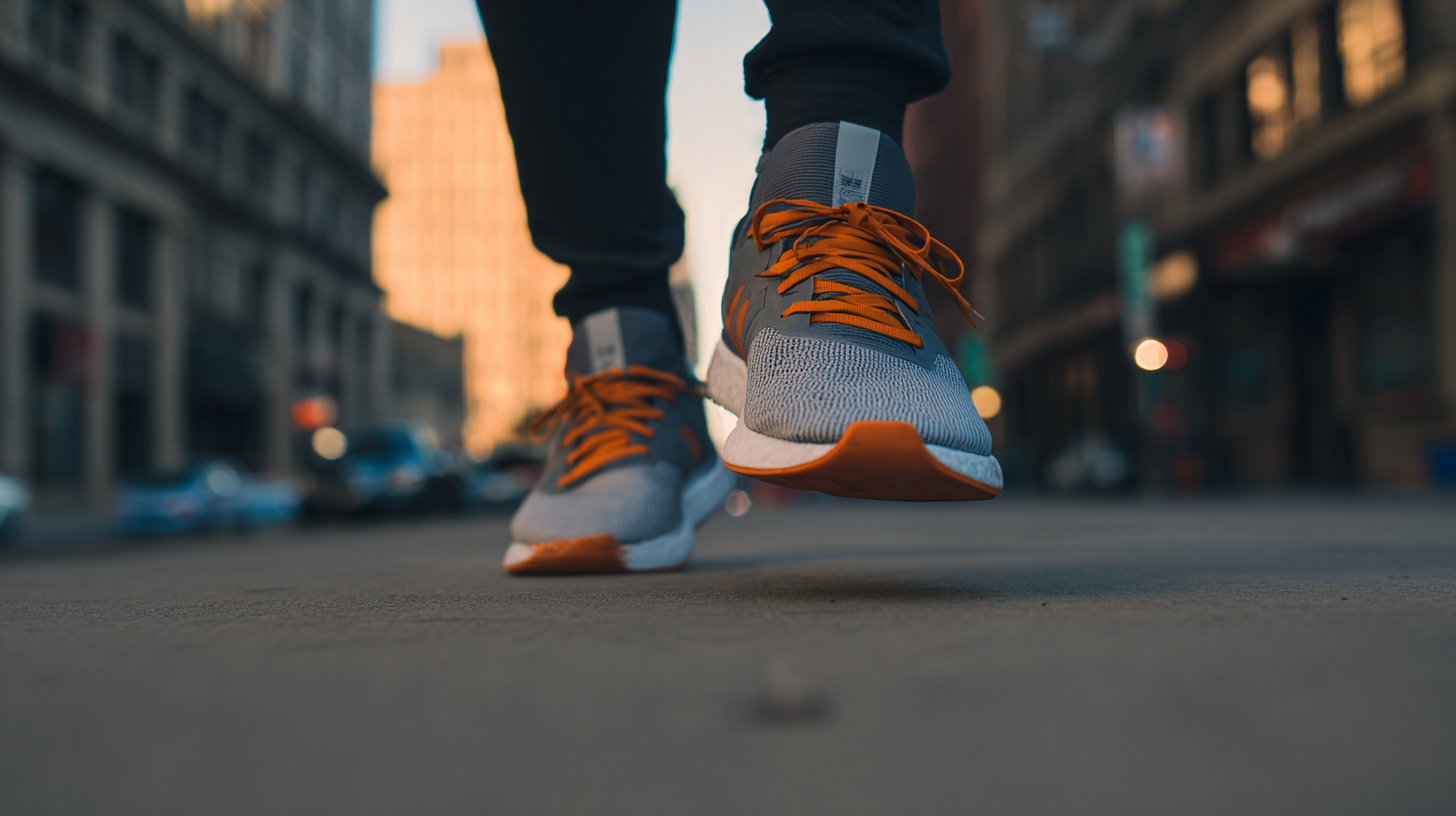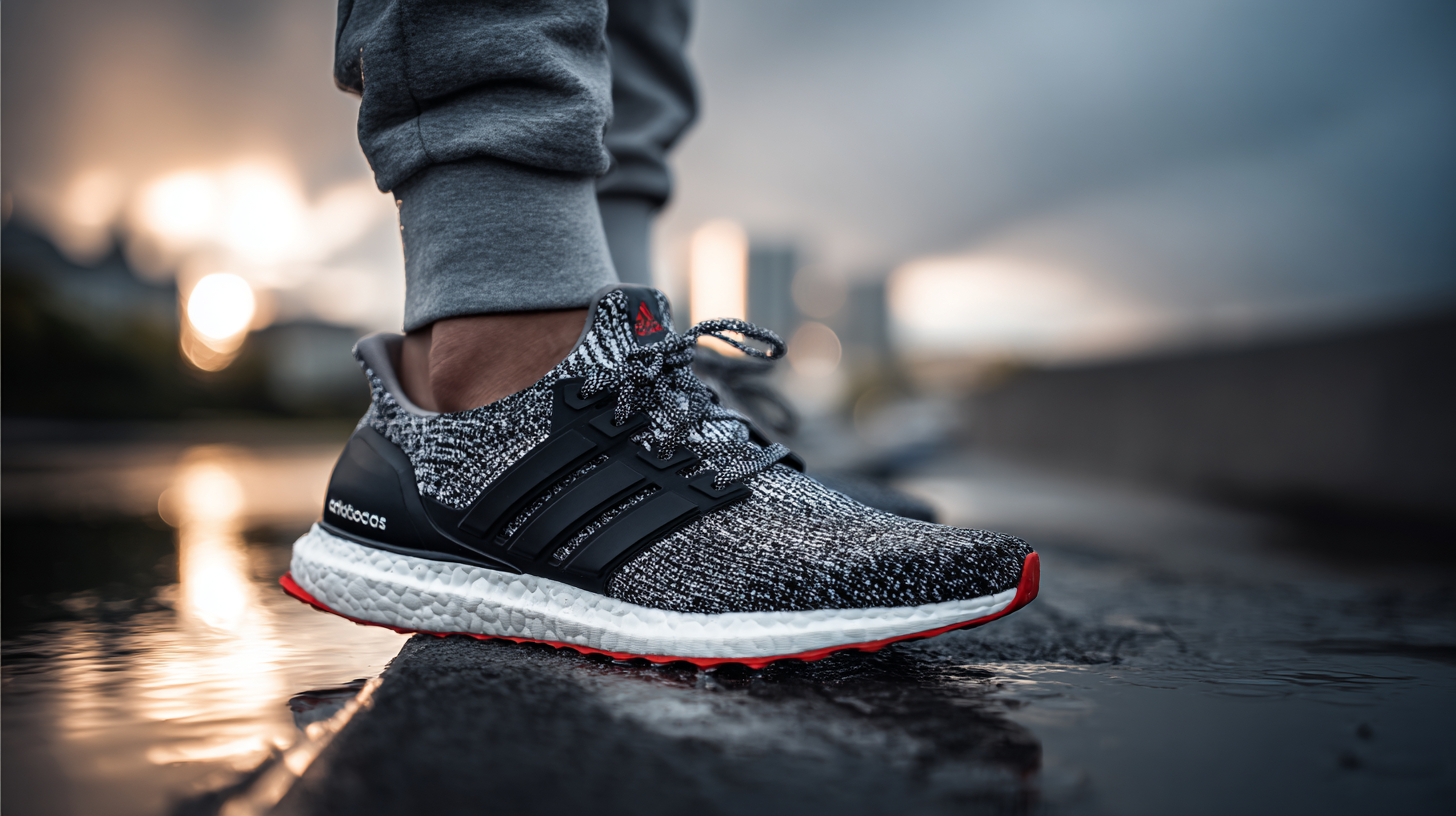
In the world of athletics, selecting the right footwear is crucial for optimizing performance, especially when it comes to running. Recent studies indicate that an estimated 79% of runners face injuries each year, often due to improper shoe choices. The sneakers running market has evolved significantly, with advancements in technology and design aimed at enhancing comfort and efficiency. According to a report by the American Podiatric Medical Association, well-fitted sneakers not only reduce injury risk but also improve overall speed by an average of 2-3%. This underscores the importance of understanding the best strategies to maximize running performance through the right sneakers. In this blog, we will delve into actionable tips, backed by insights and data, to help runners of all levels choose the ideal sneakers running that cater to their specific needs and goals.

In the realm of running shoes, innovations in technology have transformed the way athletes approach their performance. Brands are increasingly employing advanced materials and design techniques to create sneakers that offer optimal support, cushioning, and responsiveness. For instance, the integration of lightweight and breathable fabrics not only reduces the overall weight of the shoe but also enhances comfort, allowing runners to maintain high levels of performance over longer distances.
Moreover, many modern sneakers are equipped with specialized midsole technologies that provide superior energy return. Foam compounds like EVA and newer alternatives, such as Nike's React and Adidas' Boost, are designed to absorb impact and propel the runner forward with each stride. These technologies ensure that energy is not wasted during the run, leading to improved efficiency and reduced fatigue. Additionally, the implementation of 3D printing in shoe design allows for a customized fit, catering to the unique biomechanics of each runner and enhancing overall performance. As the market continues to evolve, these innovative designs are setting new standards for running excellence.
| Sneaker Model | Weight (oz) | Cushioning Type | Drop (mm) | Durability (miles) | Price ($) |
|---|---|---|---|---|---|
| Model A | 9.0 | Maximal | 8 | 500 | 150 |
| Model B | 8.5 | Neutral | 10 | 400 | 130 |
| Model C | 8.0 | Stability | 6 | 600 | 165 |
| Model D | 9.2 | Responsive | 4 | 550 | 180 |
| Model E | 7.8 | Minimalist | 12 | 300 | 120 |
When it comes to running efficiency, the design and technology of sneakers play a crucial role, particularly in terms of cushioning and support. Effective cushioning absorbs impact, reducing the strain on joints and muscles during each stride. This is essential not only for comfort but also for maintaining an efficient running form. Sneakers that incorporate advanced materials, such as EVA foam or gel inserts, can significantly enhance energy return, promoting a smoother and more responsive running experience.
Moreover, the support provided by a well-structured sneaker can help runners maintain proper alignment throughout their gait. Arch support, for instance, is critical for individuals with flat feet or high arches, as it promotes stability and minimizes the risk of injuries. Additionally, features like heel cups and midfoot lockdown can prevent excessive movement within the shoe, allowing for greater focus on performance. By choosing sneakers with the right balance of cushioning and support, runners can optimize their efficiency, reduce fatigue, and enhance overall performance on the track or trail.

When it comes to running performance, selecting the right sneakers is critical. A comparative analysis of global sneaker brands reveals significant insights into consumer preferences and performance metrics. According to a report by Statista, global athletic footwear sales are projected to reach $98 billion by 2023, indicating a growing demand for performance-oriented running shoes. Brands like Nike, Adidas, and Asics dominate this market, with Nike holding a 27.7% share in the U.S. athletic footwear market alone, largely attributed to their innovative designs and technology investments.
To maximize performance, runners should consider several factors when choosing sneakers. Tip 1: Prioritize fit over brand loyalty; a well-fitting shoe can reduce injury risk and enhance performance, with studies showing that the right fit can improve running efficiency by up to 5%. Tip 2: Analyze traction and cushioning—optimal grip and shock absorption not only improve comfort but also allow for better energy return during runs. The American Council on Exercise reports that a good running shoe can enhance speed and performance metrics significantly, particularly for long-distance runners.
Finally, stay informed about the latest data on sneaker technology innovations. Many brands utilize advanced materials that offer better breathability and durability. Tip 3: Regularly check reviews and expert opinions on running shoes. Comprehensive analysis from platforms like Runner’s World shows that shoes with carbon-fiber plates can reduce energy loss, boosting overall running performance. By leveraging this data-driven approach, runners can make informed decisions that enhance their training and competitive edge.

When it comes to running, selecting the right sneaker fit is paramount for both comfort and performance. A well-fitted sneaker can make the difference between a great run and a painful experience. One critical factor to consider is the length and width of the shoe. Ensure there’s enough space in the toe box: your toes should have room to wiggle without feeling cramped. This will not only enhance comfort but also reduce the risk of blisters and other foot injuries.
Another vital aspect is arch support. Different runners have varying arch types—high, medium, or flat. Identifying your arch type can help in choosing a sneaker that provides the right amount of support where it’s needed. Shoes that align with your natural foot structure improve efficiency and reduce fatigue.
Finally, consider your running style and the surfaces you frequent. Whether you’re hitting the trails or the treadmill, the shoe's cushioning and tread play an essential role in your overall experience. Opt for a sneaker designed specifically for your running environment to maximize both comfort and performance.
This chart illustrates the key factors that impact running comfort in sneakers, rated on a scale from 1 to 10. Cushioning has the highest impact on performance comfort, followed by stability and weight.
Sustainable practices in sneaker manufacturing are becoming increasingly vital as consumers become more environmentally conscious. With 89% of consumers now preferring sustainable products, brands are responding by implementing eco-friendly materials and processes. The shift towards sustainability not only meets consumer demand but also contributes to the overall health of the planet. As the global sneaker market is projected to grow to $3781.8 billion by 2033, the emphasis on sustainable practices is set to significantly influence this growth trajectory.
 To maximize the performance of running shoes, consider opting for sneakers made from recycled materials. This not only enhances comfort and durability but also supports a circular economy. Additionally, seek brands that prioritize ethical labor practices and carbon offsets in their manufacturing processes. This not only benefits the environment but also creates a positive brand image.
To maximize the performance of running shoes, consider opting for sneakers made from recycled materials. This not only enhances comfort and durability but also supports a circular economy. Additionally, seek brands that prioritize ethical labor practices and carbon offsets in their manufacturing processes. This not only benefits the environment but also creates a positive brand image.
 Another tip is to look for sneakers designed for longevity. Investing in high-quality, sustainable shoes means they will last longer and reduce waste. Pay attention to the brand’s commitment to sustainability and how they incorporate it throughout their product lifecycle, from design to disposal. Embrace these practices to not only boost your performance but also contribute to a more sustainable future in fashion.
Another tip is to look for sneakers designed for longevity. Investing in high-quality, sustainable shoes means they will last longer and reduce waste. Pay attention to the brand’s commitment to sustainability and how they incorporate it throughout their product lifecycle, from design to disposal. Embrace these practices to not only boost your performance but also contribute to a more sustainable future in fashion.
